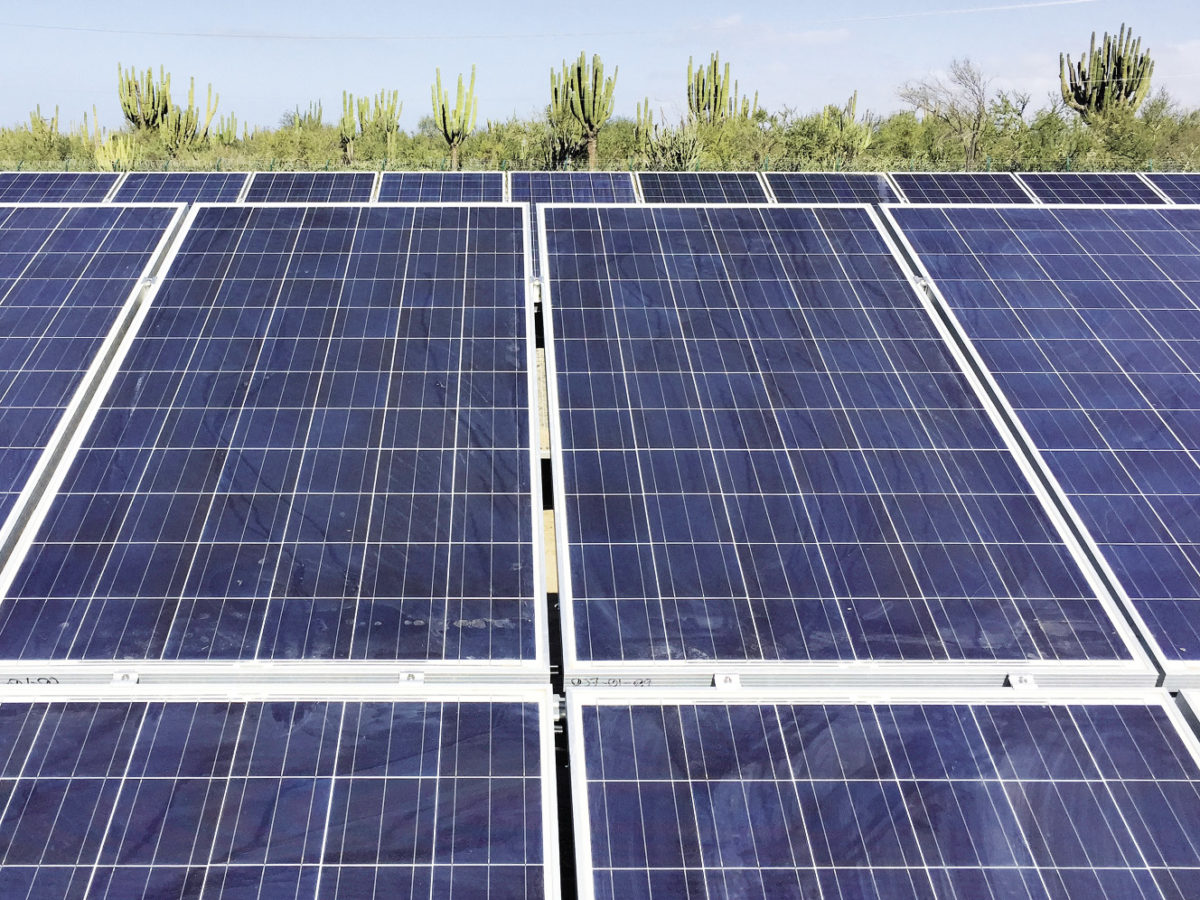From pv magazine USA.
pv magazine USA spoke to Alencon Systems president Hanan Fishman to learn more about what it means to repower a solar power plant.
Alencon, based in Hatboro, Pennsylvania, builds two pieces of hardware: the SPOT and BOSS (Bi-directional Optimizer for Storage Systems), based on the increasingly important silicon carbide, and also offers a “repowering value engineering service”. The markets serviced by Alencon – repowering aging solar facilities and DC-coupling energy storage – are relatively new niches for the 50-year-old solar module business.
There are two main reasons to repower a solar plant – “need versus greed”, to coin Fishman’s phrase. The need to repower is increasingly arising as inverters reach end-of-life and comparable 600 V hardware no longer exists. Alencon’s String Power Optimizers and Transmitters (SPOTs) take voltages at one value and output them at exactly what the new hardware requires.

The image above shows a simplified repowering carried out due to necessity. The facility needed to replace inverters that were taking in 600 V solar module strings and outputting at the standard 480 V. That means wiring, combiners and inverters need to be replaced. The area within the dotted red lines represents new hardware – and it started with Alencon’s SPOT taking in the 600 Vdc solar module strings and outputting them at 1,000 Vdc. Those outputs were wired into new, Solectria combiners, which then pushed the electricity to Solectria 1,000 V inverters.
The wiring diagrams below relate to a sample facility and show the organized complexity of a large rewiring operation. The lower half of the drawing shows the new solar module strings coming into Alencon’s SPOT and the top half notes the existing wiring that did not have to change.

Alencon president Fishman noted the cost of the SPOT hardware is only one aspect, and a small one, of the broader work which must be done to repower a site. For repowering to be viable, he said, it has to be done economically.
The company has a spreadsheet that looks a lot like a standard solar power facility return-on-investment calculator. However, the version pv magazine USA reviewed, from which the excerpt below was taken, focuses on the cost of new hardware and the increase in output.

Here we start to learn a bit more about the somewhat harshly titled “greed” argument for upgrading facilities. If a plant owner knows the hard math required to switch out new hardware, and improved hardware such as better trackers or bifacial modules exists which can increase electric generation – at what financial moment does an upgrade make sense?
The answer comes from a combination of factors including the amount of new generation, the rate the site earns for generation, the challenge of securing a new interconnection agreement and the cost for the developer. Plus, of course, the labor costs involved in moving around gear – something Alencon says needs as much focus to secure cost effectiveness during engineering processes such as designing installation of its hardware.
Those variables are very similar to the original spreadsheet models for solar power projects.
To build a solar and wind-powered grid, a lot of new hardware and ideas will be needed. It may involve use of a new type of solar cell; interacting with nature differently; deploying solar in a lot of new places.
And it will mean working with already deployed hardware in a different fashion – repowering or repairing sites as required or desired.
This content is protected by copyright and may not be reused. If you want to cooperate with us and would like to reuse some of our content, please contact: editors@pv-magazine.com.



2 comments
By submitting this form you agree to pv magazine using your data for the purposes of publishing your comment.
Your personal data will only be disclosed or otherwise transmitted to third parties for the purposes of spam filtering or if this is necessary for technical maintenance of the website. Any other transfer to third parties will not take place unless this is justified on the basis of applicable data protection regulations or if pv magazine is legally obliged to do so.
You may revoke this consent at any time with effect for the future, in which case your personal data will be deleted immediately. Otherwise, your data will be deleted if pv magazine has processed your request or the purpose of data storage is fulfilled.
Further information on data privacy can be found in our Data Protection Policy.